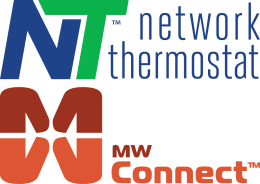
Introduction
The air we breathe plays a significant part in our health and well-being. In today's world, where people in developed countries spend a great deal of time indoors, it is important to maintain healthy buildings that promote good indoor air quality. Real-time CO2 monitoring is a valuable tool for maintaining a healthy building environment. In this article, we will discuss how real-time CO2 monitoring can help maintain a healthy building.
Definition of A Healthy Building
A healthy building is one that provides a safe and comfortable indoor environment that promotes the well-being of its occupants. A healthy building should have good indoor air quality, and adequate ventilation, and be free from environmental hazards such as mold, asbestos, and other pollutants.
Importance of Maintaining Healthy Buildings
Maintaining a healthy building is important for several reasons. Primarily, poor indoor air quality can cause a range of health problems, including respiratory issues, headaches, and fatigue. These health problems can lead to decreased productivity and increased absenteeism, resulting in a loss of revenue for businesses and student attendance in schools.
Role of Real-time CO2 Monitoring in Maintaining Healthy Buildings
This type of monitoring can help to maintain a healthy building environment in several ways. First, it can help to identify areas of a building where ventilation may be inadequate. High levels of CO2 can be an indication of poor ventilation, which could lead to the accumulation of other pollutants in the air. CO2 monitoring devices can alert building operators to areas where ventilation may need to be improved, allowing them to take action to address the issue.
Second, real-time CO2 monitoring can help indicate whether HVAC systems are operating efficiently. By keeping track of CO2 levels, building operators can determine whether ventilation rates need to be adjusted to stay within recommended parameters. This can help to reduce energy costs by ensuring that HVAC systems are not operating unnecessarily.
Third, monitoring CO2 continuously can help to ensure the health and safety of a building’s occupants. High levels of CO2 may be an indication of additional environmental hazards, such as the presence of combustible gasses. Monitoring devices can alert building operators to the presence of these hazards, allowing them to take action to address the issue before it becomes a safety concern.
Types of CO2 Monitoring Devices
There are different types of CO2 monitoring devices, including non-dispersive infrared (NDIR) sensors and photo-acoustic sensors. Real-time CO2 monitoring works by continuously measuring the amount of CO2 in an indoor space and transmitting the data to a central system for analysis and action.
Personal monitors - Personal monitors are small, portable devices that can be worn by individuals to monitor CO2 levels in their immediate environment. These devices are often used in industrial or occupational settings to monitor worker exposure to CO2 on an as-needed basis where CO2 generation is higher than in office environments.
Fixed monitors - Fixed monitors are typically installed in a building or room and provide continuous monitoring of CO2 levels. These devices, such as NetX X-Series thermostats (X7C-WIFI, X7C-IP, or the X7-WIFI or X7-IP with the added CO2 plug-in module)can be connected to ventilation systems to help maintain appropriate CO2 levels.
How Real-time CO2 Monitoring Works
Continuous CO2 monitoring involves the use of sensors that are placed throughout a building or room to detect CO2 levels, such as the NetX X-Series thermostats. These thermostats with CO2 sensors are typically connected to a central monitoring system that can provide real-time data on CO2 levels. The NetX systems also include visual alarms and text/SMS notifications that alert building owners or occupants when CO2 levels exceed a certain threshold.
Applications for Real-Time CO2 Monitoring Systems
Real-time CO2 monitoring systems are beneficial in a wide range of indoor spaces. Schools, commercial office buildings, bars, and restaurants are just a few examples of spaces that can benefit from real-time CO2 monitoring systems.
School Districts
Real-time CO2 monitoring systems are particularly useful in school districts, where large numbers of students, staff, and faculty occupy buildings for extended periods. High CO2 levels can cause fatigue, and headaches, and reduce cognitive function, which can have a significant impact on students' learning abilities.
CO2 monitoring systems provide real-time data on indoor air quality, enabling school districts to take proactive measures to maintain healthy classrooms and learning environments.
California has also mandated all new K-12 classrooms to have CO2 monitors installed, and schools are encouraged to implement CO2 monitoring systems in all classrooms as part of the state's Healthy Schools Act, which requires schools to provide a safe and healthy educational environment.
Commercial Office Buildings
Commercial office buildings can also benefit from real-time CO2 monitoring systems, which can help improve indoor air quality and promote employee health and productivity. High levels of CO2 can lead to headaches, fatigue, and other health issues, which can impact employee performance and morale. By monitoring CO2 levels, building owners and managers can take proactive steps to address those levels and promote a healthy work environment.
Bars and Restaurants
Bars and restaurants are another application for real-time CO2 monitoring systems, as these establishments can often have high levels of CO2 due to large crowds, poor ventilation, and even leaky CO2 tanks used for carbonating soft drinks. High levels of CO2 can lead to headaches, dizziness, and other health issues, which can impact customer satisfaction and repeat business. Elevated CO2 levels can be particularly dangerous for employees who are serving alcohol, which can further impair decision-making abilities.
By monitoring CO2 levels, bar and restaurant owners can take proactive steps to improve indoor air quality and promote a healthy work environment and an enjoyable dining experience for customers. Some restaurant chains even require CO2 monitoring in their back-of-house operations.
Benefits of Real-Time CO2 Monitoring in Building Maintenance
This type of ongoing monitoring provides multiple benefits, including the ability to analyze data that can be used to make adjustments to ventilation systems or other building systems to maintain healthy indoor air quality.
Improving Indoor Air Quality
By continuously monitoring CO2 levels, building managers can identify areas with poor ventilation and implement measures to improve air circulation. This reduces the concentration of CO2 and helps remove other pollutants that may be present in the air.
Enhancing Occupant Comfort & Attention
In addition to improving indoor air quality, ongoing CO2 monitoring can also enhance occupant comfort and attention. High levels of CO2 can cause drowsiness and a decrease in cognitive function, which can impact productivity and attention span. By maintaining optimal CO2 levels, building managers can create a more comfortable and productive indoor environment for occupants.
Data Analysis and Reporting
Analyzing the data collected from CO2 monitoring allows building managers to identify trends or potential issues and to evaluate the effectiveness of any changes or upgrades made to the ventilation or CO2 monitoring systems.
Regular reporting on CO2 levels and ventilation system performance can also help to ensure that building occupants are aware of any air quality concerns and can help to build trust and transparency between building operators and occupants.
It is important to have a plan in place for addressing any issues that may arise with the ventilation or CO2 monitoring systems. This may include identifying backup systems or procedures in case of system failure, as well as having a plan for responding to high CO2 levels or other air quality concerns.
Ready to find CO2 monitoring that integrates with your HVAC system? See any of these NetX X-Series thermostats: X7C-WIFI, X7C-IP, or the X7-WIFI or X7-IP with the added CO2 plug-in module.
Contact Us for More Information



